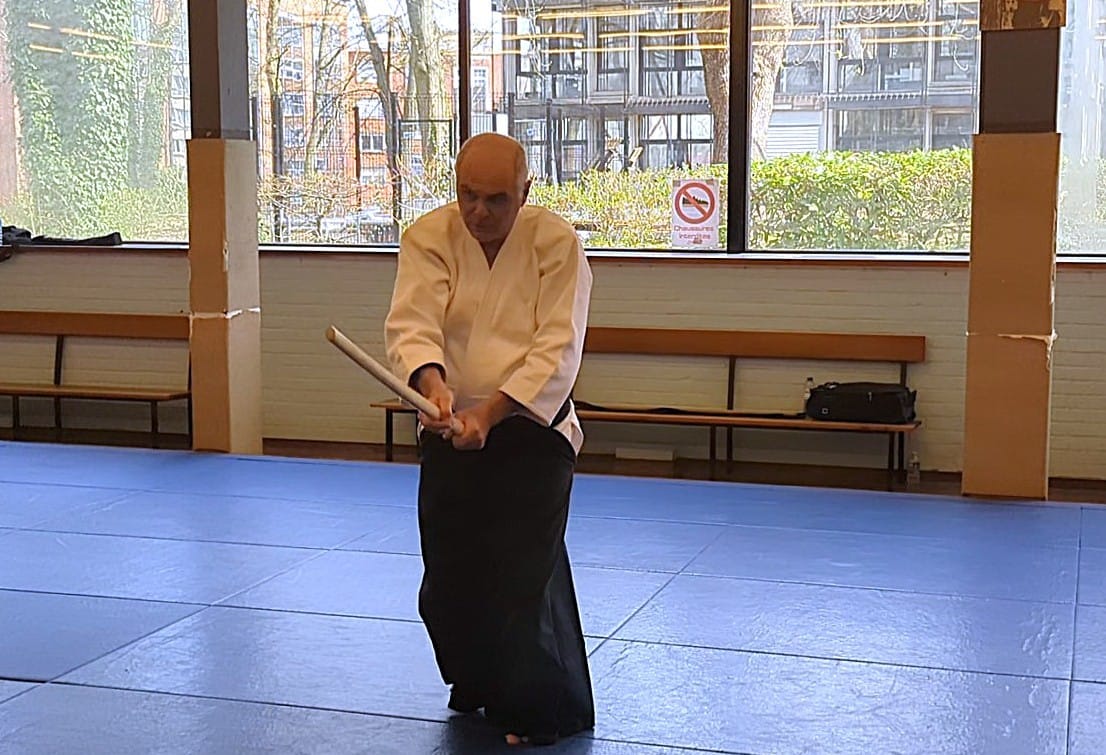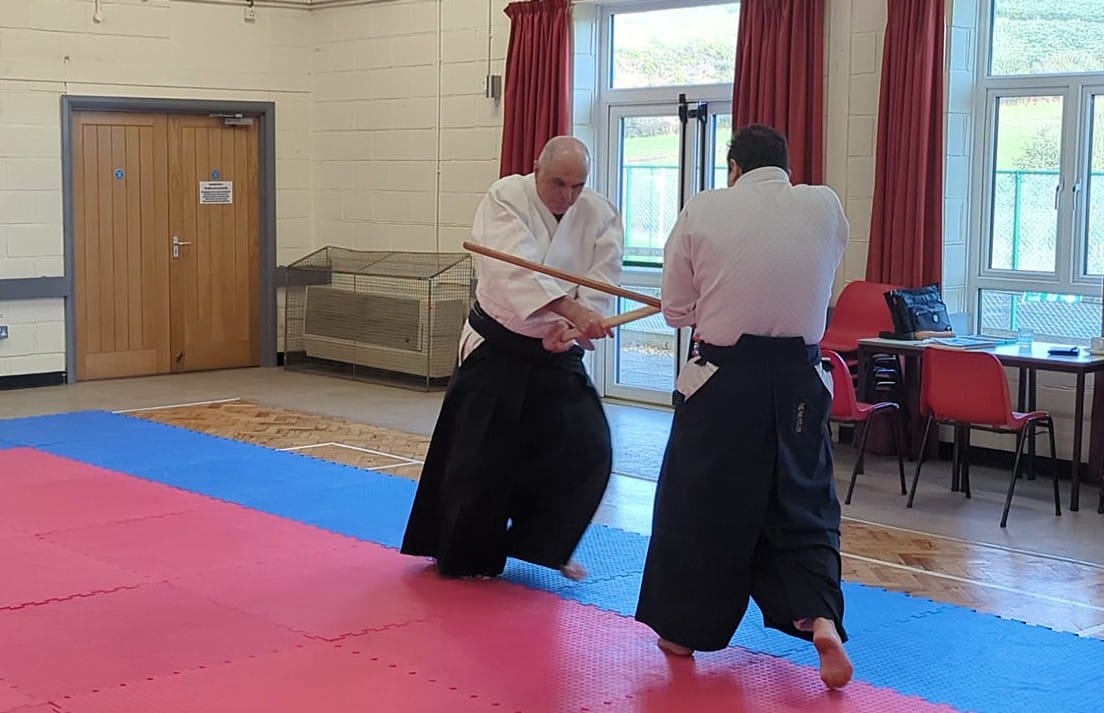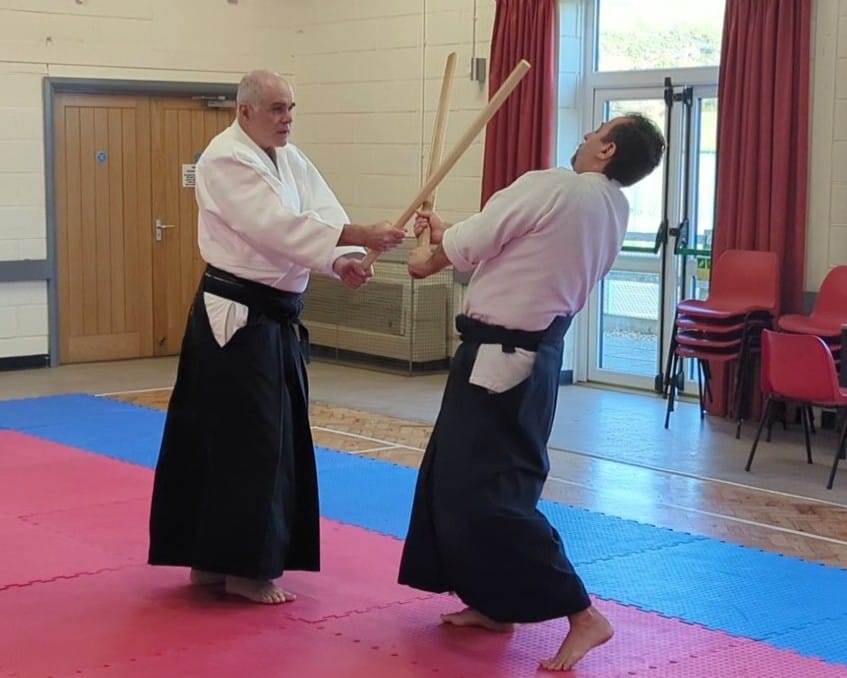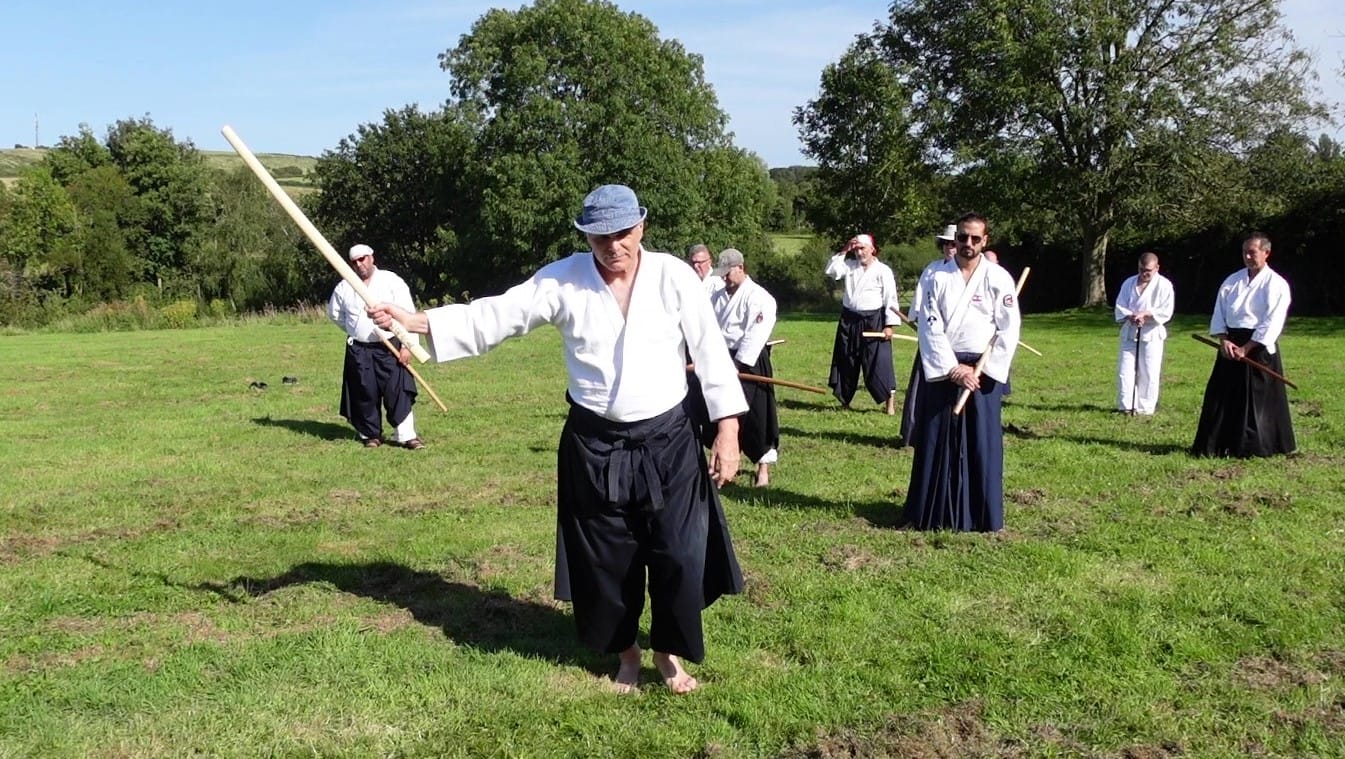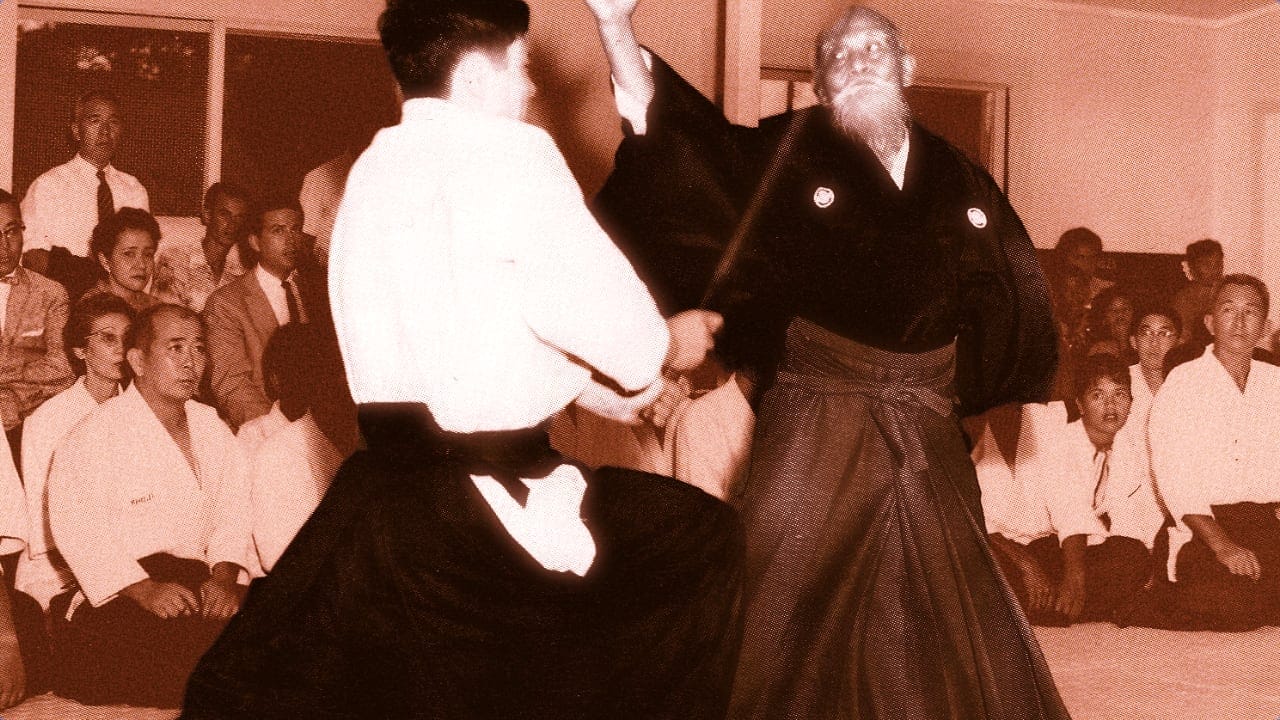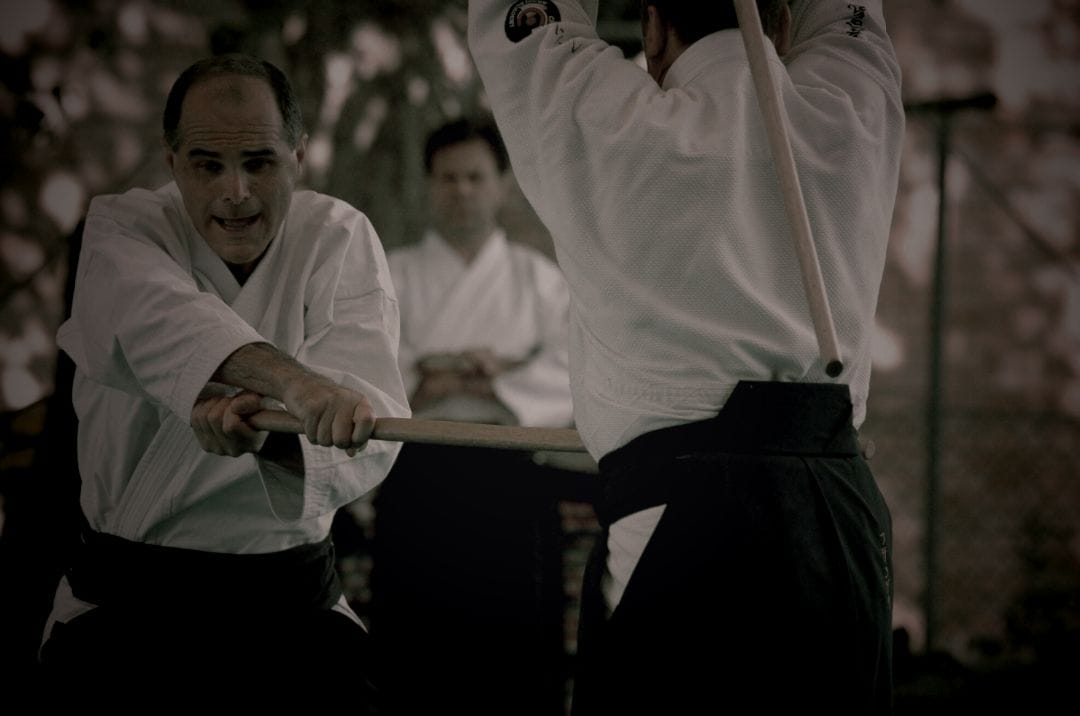In Aikido, there is only one position, and that is hanmi-irimi. Whether unarmed or with a sword, it is vital to always adopt this position, in which the body is presented in profile. This position is the prerequisite for the aiki action (irimi) .
But the action that begins with hanmi-irimi is not a position; the action is movement. During this movement, the hips pass through a moment when they are facing forward, at the same level. The name for this moment is kenka goshi (喧嘩腰), which means that the hips (koshi 腰) are positioned to strike (kenka 喧嘩).
For a sword cut to be perfectly vertical, the hips must be facing forward at the moment of striking. This is the condition for a powerful cut. At the moment of cutting, the hips must not be in profile.
Cutting too far away is not good, as it forces you to cut in a position other than kenka goshi. Cutting a target that is too far away requires an exaggerated forward lunge, which creates an opening that your opponent can use to his advantage. If the target is too far away, you must move closer before striking. The ideal power and maximum safety depend on the correct striking distance.
Hanmi-irimi is the condition for action (irimi), kenka goshi is the condition for the correct strike (shomen). But there is a fundamental difference between the two: hanmi-irimi is a position, a pause, while kenka goshi is a moment of movement. Kenka goshi is therefore not a position.

